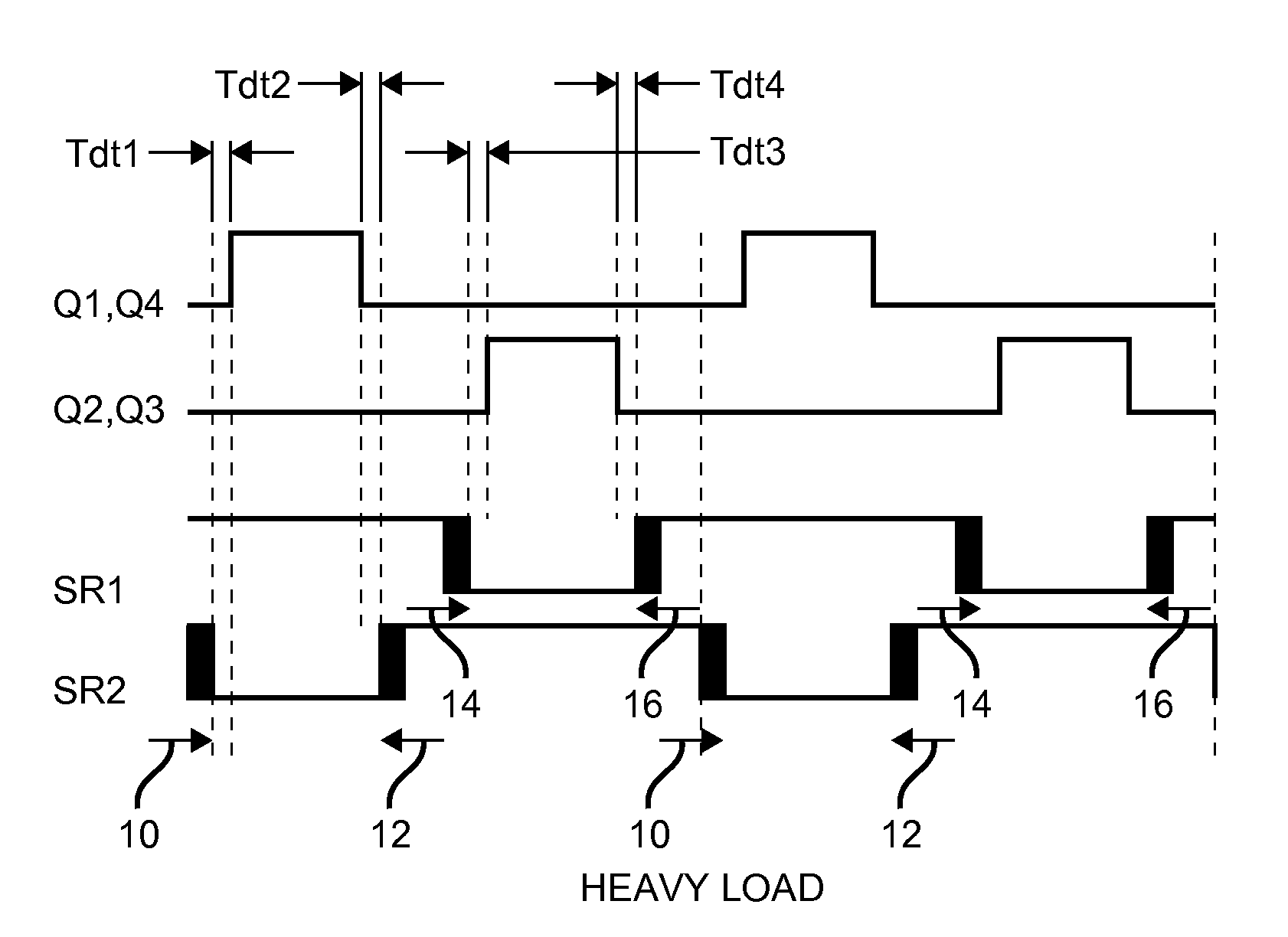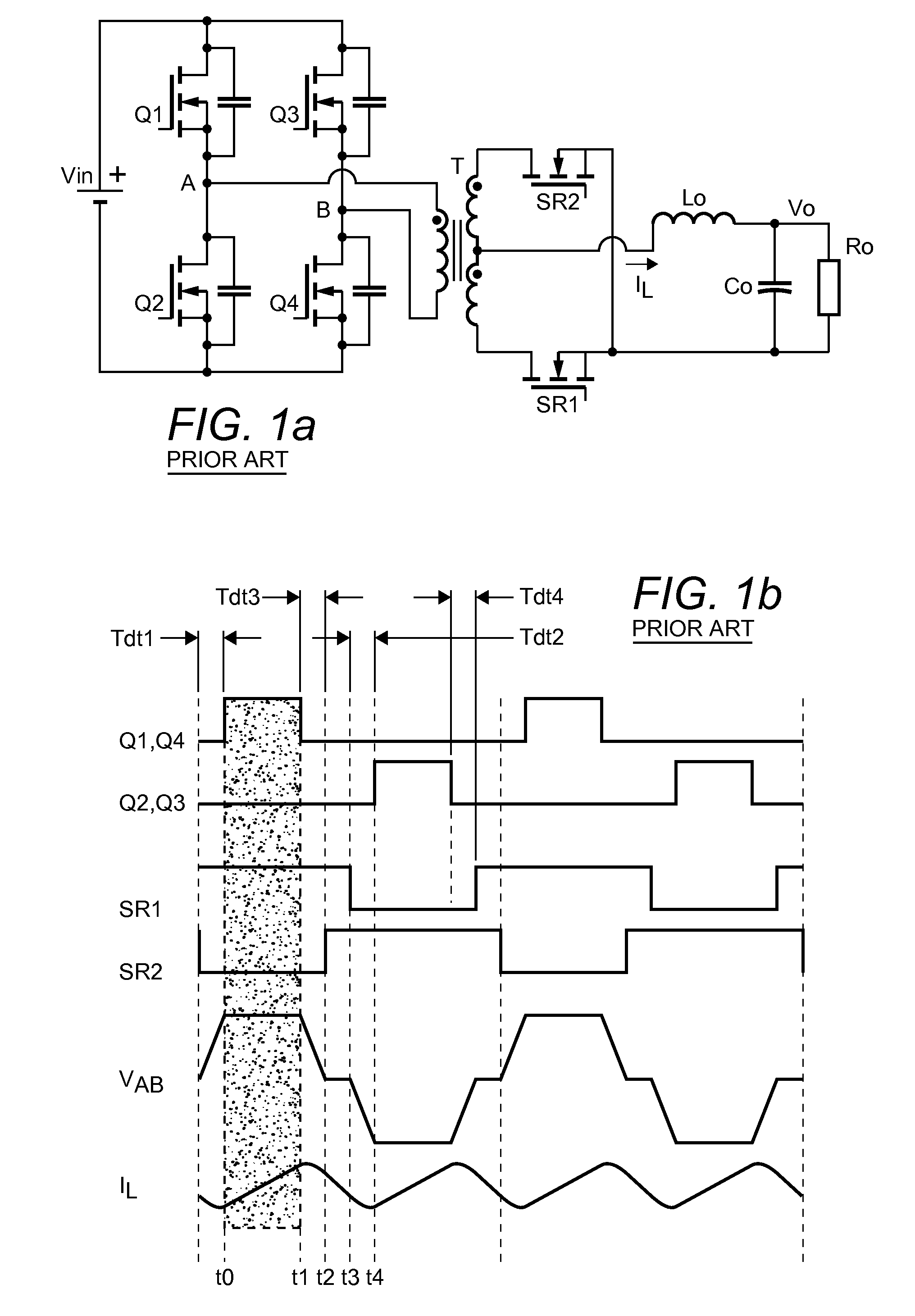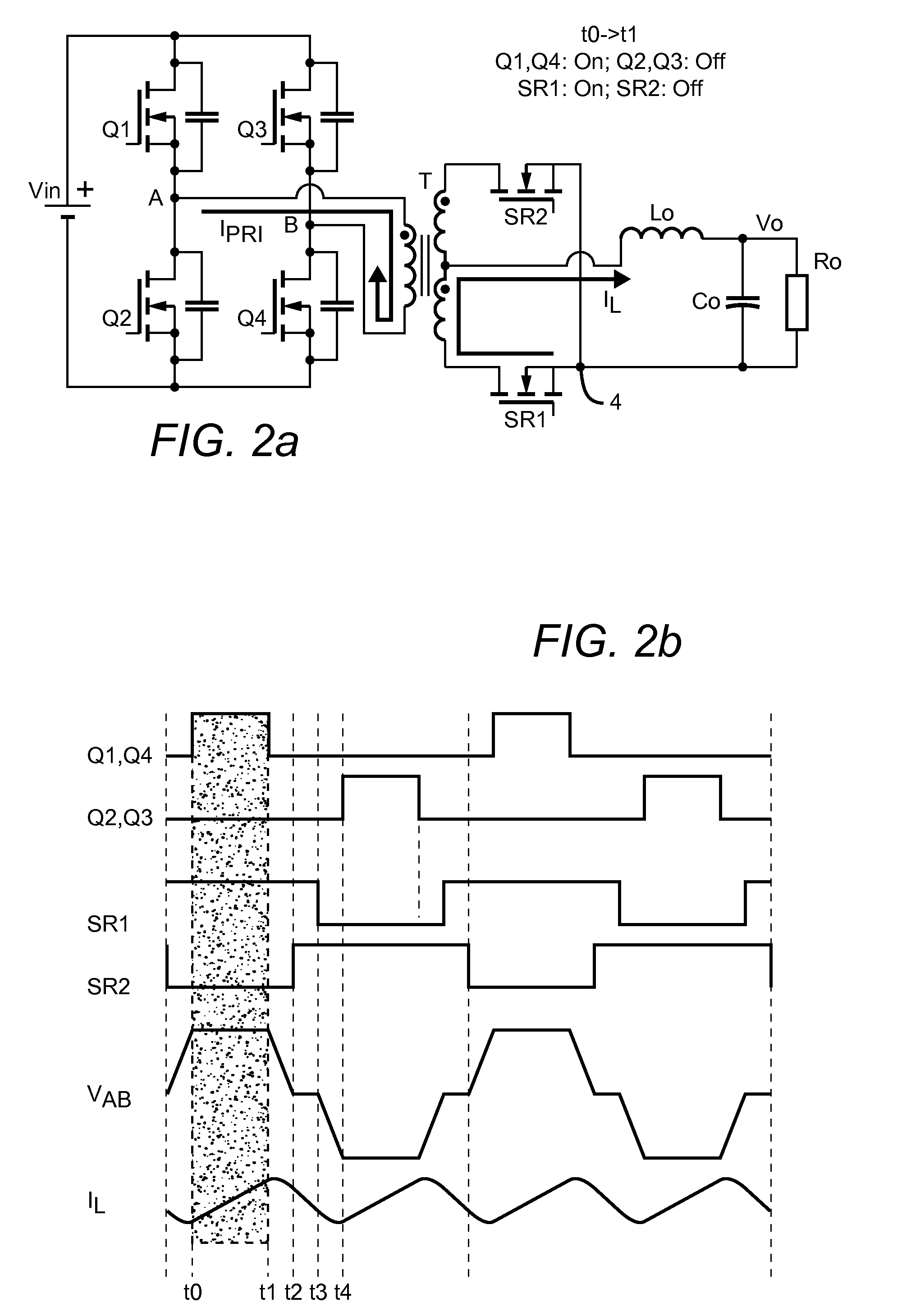Adaptive dead time control scheme for switch mode power converter with synchronous rectifiers topology
a dead time control and switch mode technology, applied in the field of switch mode power converters, can solve the problems of power loss and efficiency loss at light loads, shortening of sr by sr, etc., and achieve the effect of high efficiency
- Summary
- Abstract
- Description
- Claims
- Application Information
AI Technical Summary
Benefits of technology
Problems solved by technology
Method used
Image
Examples
Embodiment Construction
[0020]The operation of a power converter with a full bridge with SR topology is illustrated FIGS. 2a, 3a, 4a and 5a, along with corresponding timing diagrams 2b, 3b, 4b and 5b, respectively; in this example, the converter is arranged to operate in continuous conduction mode (CCM). Note that FIGS. 2a-5a only indicate one of the four “dead time” intervals as defined above. The basic converter topology is as described above: four transistors Q1-Q4 are arranged in a full bridge configuration, with the bridge's input connected across a DC input voltage Vin and the bridge's output—taken at circuit nodes A and B—connected across the primary winding of transformer T. Synchronous rectifiers SR1 and SR2 are connected respective sides of the transformer's secondary winding and a first node (labeled as node 4 in FIG. 2a), and inductor Lo is connected between a tap on the transformer's secondary winding and an output node at which output voltage Vo is provided. Output capacitor Co and load Ro ar...
PUM
 Login to View More
Login to View More Abstract
Description
Claims
Application Information
 Login to View More
Login to View More - R&D
- Intellectual Property
- Life Sciences
- Materials
- Tech Scout
- Unparalleled Data Quality
- Higher Quality Content
- 60% Fewer Hallucinations
Browse by: Latest US Patents, China's latest patents, Technical Efficacy Thesaurus, Application Domain, Technology Topic, Popular Technical Reports.
© 2025 PatSnap. All rights reserved.Legal|Privacy policy|Modern Slavery Act Transparency Statement|Sitemap|About US| Contact US: help@patsnap.com



